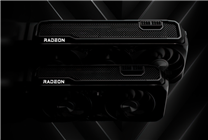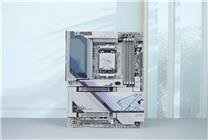AMD’s FSR Redstone: Revolutionizing Gaming Performance with Machine Learning
Summary:
- AMD recently unveiled its FSR Redstone, a groundbreaking machine learning tool at the 2025 Computex exhibition.
- Redstone’s ML2CODE technology allows for cross-platform support across various GPUs, including those from NVIDIA and Intel.
- The upgrade promises improved visual effects and performance without requiring modern AI acceleration features.
At the recent Computex 2025 exhibition, AMD announced a significant enhancement to its FidelityFX Super Resolution (FSR) with the introduction of FSR Redstone. This innovative suite of machine learning (ML) tools empowers developers to incorporate advanced neural rendering technology into video games, significantly boosting both visual fidelity and performance.
Behind the Technology: Understanding ML2CODE
In an interview, Chris Hall, AMD’s senior director of software development, elaborated on the transformative capabilities of Redstone, particularly highlighting its ML2CODE technology. This advanced system is designed to convert trained neural network models into efficient GPU computing shader code. The output, optimized HLSL (High-Level Shader Language) code, is compatible with any GPU that supports modern shader functionality.
Redstone functions as a bridge, translating neural rendering cores into standard computing shaders. This means that the FSR Redstone’s shader code can seamlessly operate on GPUs from different manufacturers, including AMD, NVIDIA, and Intel. The result is a unified and enhanced gaming experience across various hardware setups.
Accessibility Across Generations
One of the most noteworthy features of AMD’s FSR Redstone is its broad compatibility. Hall confirmed that the new upgrade does not depend on specific AI acceleration capabilities to function. This design choice enables all machine learning-powered features to be utilized even on older GPUs, broadening accessibility for gamers.
Additionally, Redstone’s architecture is engineered to optimize shader code prior to execution, thereby accomplishing acceleration without demanding real-time AI computing resources. Although there might be some performance trade-offs when employing Redstone on older hardware, the expectation is that the technology will deliver considerable benefits.
Performance Expectations
Currently, FSR 4 is only functional on the RDNA 4 architecture, leaving older generations unsupported. However, given that Redstone represents AMD’s inaugural foray into machine learning-based implementations, it is anticipated to extend support to RDNA 3 graphics cards. This move could lead to significant performance enhancements, allowing a larger segment of the gaming community to benefit from these advancements.
Conclusion
AMD’s FSR Redstone stands as a vital development in the gaming landscape, leveraging machine learning to elevate visual effects and performance. The introduction of ML2CODE confirms AMD’s commitment to fostering a versatile graphics ecosystem that benefits players across all hardware platforms, from cutting-edge technology to more dated systems. With this latest innovation, AMD is not just redefining game graphics; it’s also making high-performance gaming more accessible than ever.
This expanded article provides a comprehensive overview of AMD’s FSR Redstone upgrade while adhering to SEO best practices. By focusing on key topics such as ML2CODE and cross-platform support, it ensures relevance in search rankings for gaming technology discussions.








